|
2017 Riding Season for the Delta-11 Prototype and Misc Other Accomplishments |
|
Shop Kittens added in Spring 2017 Our long term shop cat died last Fall. RIP Fluffy. So, with spring in the air, my son Ben brought home three new members of our family. Nala, Phibe and Adele have helped keep the shop rodent-free this year. We're thankful for the joy they've added around our house and in the shop. 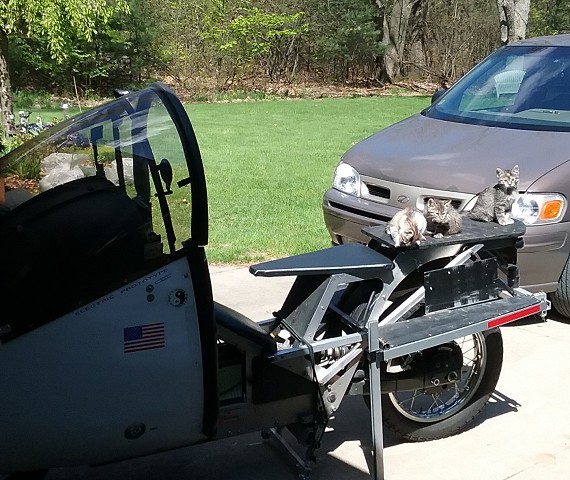 |
|
Solar Projects in 2017 In the Fall of 2016 we recognized we were losing large amounts of Solar Electrictiy production due to shading from leaves on trees in the back of the house in the Fall, Winter and Spring months. The trees were not shedding all their leaves until March or April and just the shadows of the branches were a problem. Also, we wanted to take advantage of 30% Federal Tax Credits for solar available in 2016 (but in future jeopardy given the election results of 2016). So, during the Fall of 2017, we moved our original 1kW Solar array (4 solar panels, commissioned in Feb. 2014) from the back yard to the front of the barn. We also added one more panel to the face of the barn. This freed up room in back yard to add a rack with 12 solar panels to the back of the house before December 31, 2016. 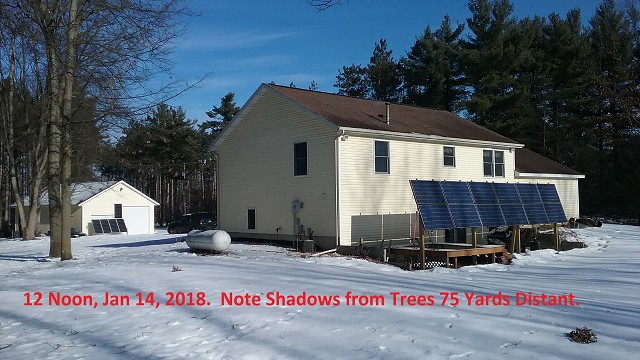 The twelve panels in the rear of the house are Evergreensolar ES-E-220-fc3 220 Watt Solar Panels with Enpahse Energy M215-IG Microinverters (2.58 kW Peak Output). So, Our Total Peak Solar Output is 3.83 kW. The new solar panels with the M215 microinverters were not out-putting full power, so in March 2017 we installed an Enphase Envoy monitoring system to track all the panels and get precise readings on what each microinverter was doing. The M215 Inverters started working correctly once the Envoy was installed. Net Metering paperwork was updated and approved by May 2018 . The chart below shows the weird solar output the Envoy gathered from the inverters from January to March. In July, there was a grid power outtage that reset our clocks and put our solar production down for a few days. In the Fall, the solar production was being greatly curtailed by shading. So, in September, we started trimming some trees back. The charts showed immediate improvement in solar output from cutting down the trees. But, there are tall trees south of our property line that are still causing shading, so our solar output suffered greatly due to leaves and branches until the December snows knocked all the leaves off. We had lots of snow and overcast conditions the entire month of December. Finally, in January 2018 we have sun and most all the leaves are on the ground. 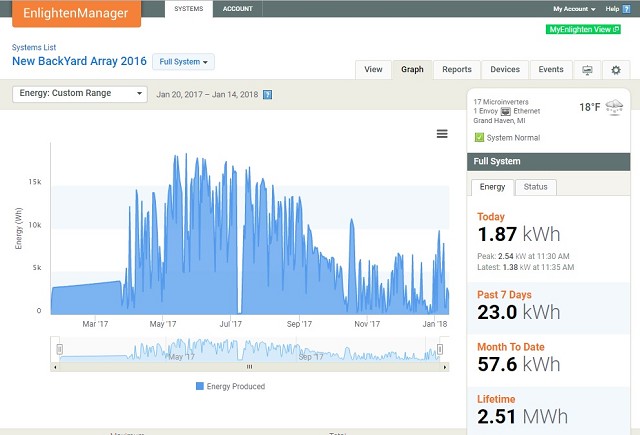 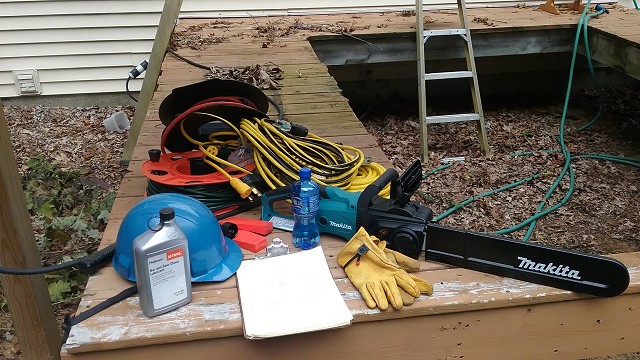 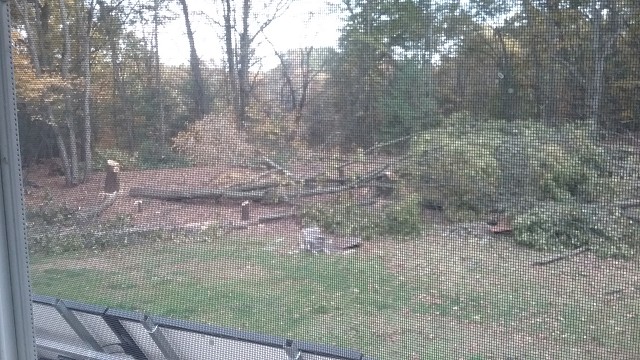 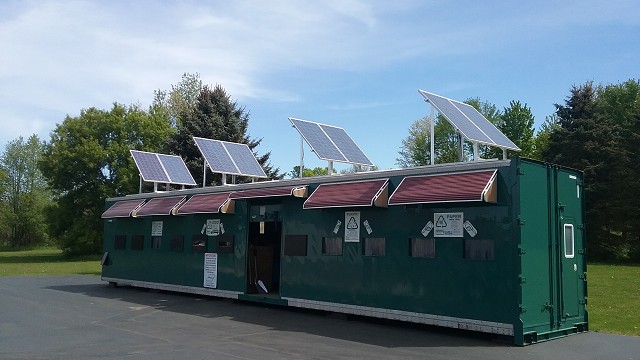 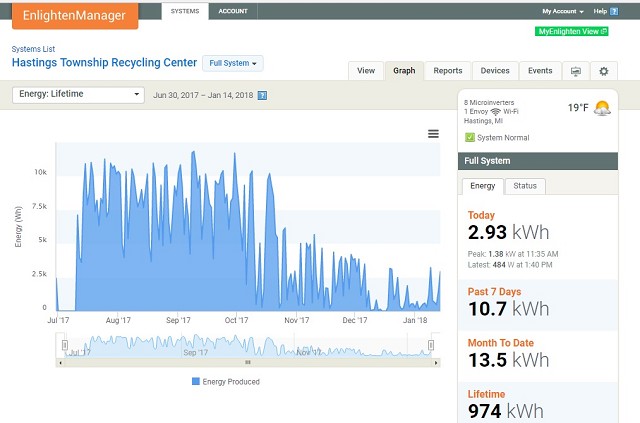 |
|
Remote Battery Monitoring Project in 2017 In February-March, Schultz Engineering developed a remote battery voltage monitoring system that uses Arduinos, Bluetooth, an Android App, and an Android Cell Phone to report on battery voltage status via text messages. The system allowed us to develop knowledge and skills to program Arduino's and Androids. A functional prototype has been in testing and working well since March 1st reporting electric vehicle charging status for the Delta-11 motorcycle and the Festiva Electric car. Click here to learn more http://www.schultzengineering.us/revolt.htm 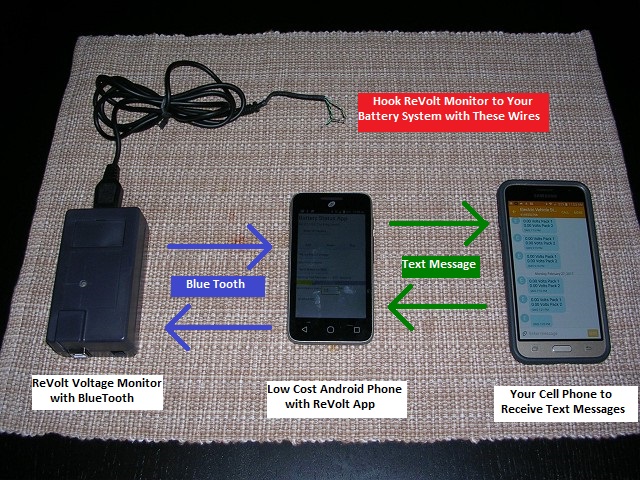 |
|
Nuclear Power Plant Replacement by 2022 We began looking at what actions would be required to replace the electricity production of the Palisades Nuclear Power Plant with renewable energy. The answer is that to replace base-load capacity like this we'll need to change our lifestyles AND install a VAST amount of solar panels, wind turbines and batteries. It will take years to accomplish. Click here for more information http://www.schultzengineering.us/palisade.htm 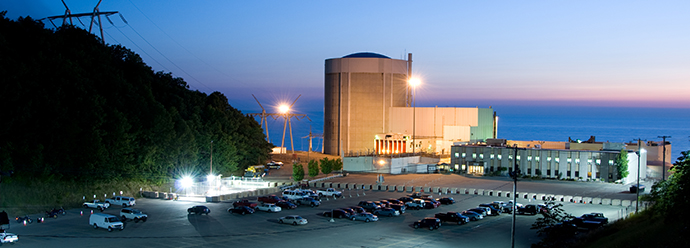 |
|
Completed Vetter Challenge 2017 We helped organize and lead the Vetter Fuel Economy Challenge 2017 in Lexington Ohio. Click here for full details http://www.schultzengineering.us/vmd-2017.htm 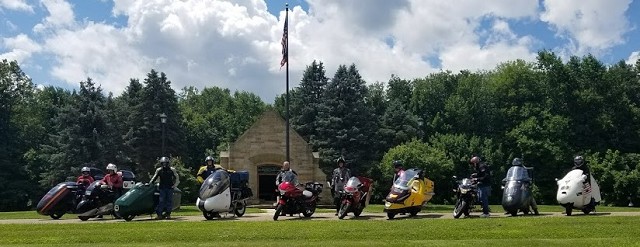 |
|
Electric Vehicles offer Fast ROI for Solar PV In 2017, our salvaged Chevy Volt Batteries Powered 9,100 Miles of Travel: 6,626 miles in the Festiva Electric Car (Car Odometer reading is 16,391 miles). 2,503 miles in the Delta-11 Motorcycle traveled (Bike Odometer ready is 21,240 miles). Our Newest home Solar Array is pictured with our electric vehicles. The picture shows how solar production relates to transportation. This Solar array should produce over 2,500 kWh of electricity per year. That amount of electricity can power this electric car for 8,500 miles or this electric motorcycle for 30,000 gasoline free miles per year. The Array cost $5000 to install ("$2/Watt"). It has the ability to power the car for 127,000 miles over the next 15 years. That would cost $15,000 of gasoline in a mini van. That's a 5 Year Payback. Or, it could power the electric motorcycle for 450,000 miles over the next 15 years. This would cost $56,000 for gas in a mini-van. 1.33 year payback By the way, the payback times DO NOT include any tax rebates...So, in 2017, don't need tax rebates to make it work, they just make it even easier to justify ending our Gasoline/War addiction. Note, the bike gets twice as many miles per kW-Hr as the car, so for saving the planet, the bike is the way to go. But, for safety, convienience and hauling capacity, the car has the motorcycle beat hands down. Click here for overview of Electric Ford Festiva http://www.evalbum.com/4920 Click here for VIDEO overview of Electric Ford Festiva Motorcycle https://www.youtube.com/watch?v=eLin4PzdVJw&list=PLR7JVQIPyPvYDqIqDLIbbkGBiqD37DFEL Click here for overview of D-11 Motorcycle http://www.evalbum.com/3848 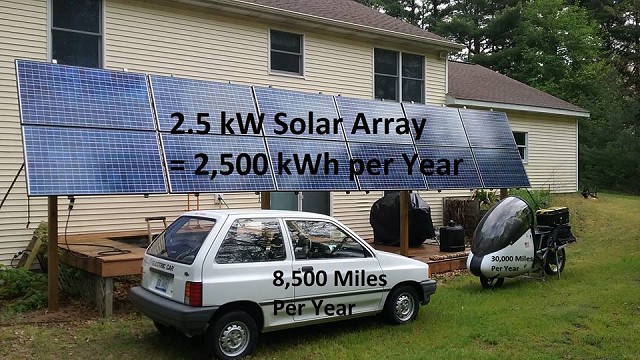 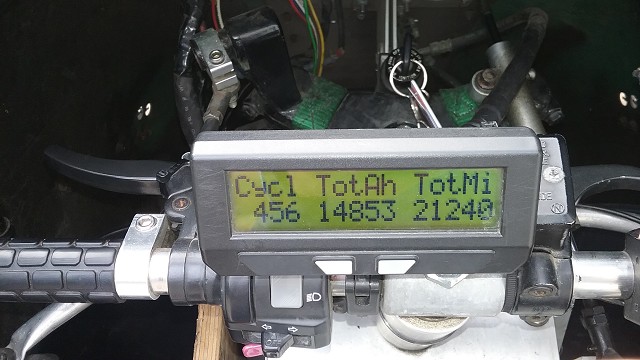 |
|
Faster Charging for EV's In 2017, a friend donated a Tesla UMC charger that we added a J1772 charge handle to. This allows us to charge EV's at 220VAC 30Amps via the J1772 standard.  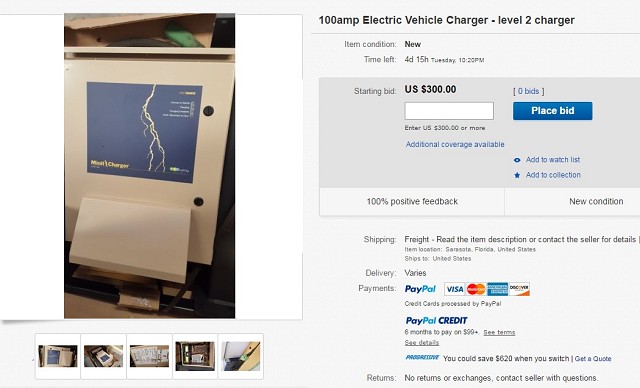 |
|
Energy Storage Project Ideas On Drawing Board We've been shopping for a good deal on a Nissan Leaf that has a CHAdeMO charge port. We've decided that the vehicle needs to be at least a model year 2013 because that year has better batteries, improved heating system and faster onboard J1772 charging equipment. This car will be part of a project to do R&D on using electric vehicles to store energy, do Vehicle to Grid, Maximize Self Consumption, do peak shaving, do demand response, trade energy with other vehicles, etc. Click here to learn more about a similar Schultz Engineering project http://www.schultzengineering.us/e-store.htm We hope to secure a Nissan Leaf in 2018. We may make a road trip to California to get it. Here is a 2013 SV that we test drove and absolutely loved. Unfortunately, it didn't have the CHAdeMO charge port. 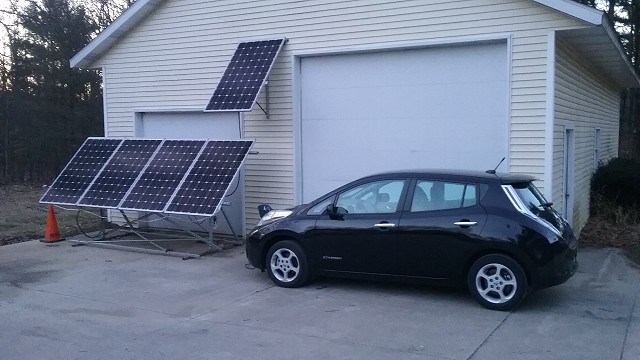 |
|
(Next Page) |
|
Inventing a better tomorrow today... Copyright 2018, Schultz Engineering, LLC, written by Kraig Schultz |